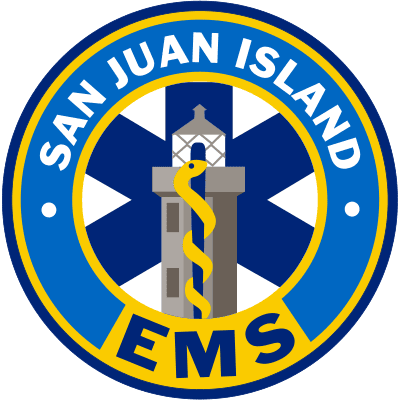Resuscitation Academy Fellows
![]() Dr Michael Sullivan and Chief Jim Cole, as well as Paramedic Patrick Shepler from Orcas Fire, have completed the Resuscitation Academy in Seattle. This week long academy presents and trains individuals in the latest science and practice of successful out of hospital cardiac arrest resuscitation. Current science and operational best practices are taught and enabled through this academy.
Dr Michael Sullivan and Chief Jim Cole, as well as Paramedic Patrick Shepler from Orcas Fire, have completed the Resuscitation Academy in Seattle. This week long academy presents and trains individuals in the latest science and practice of successful out of hospital cardiac arrest resuscitation. Current science and operational best practices are taught and enabled through this academy.
The goal of the Resuscitation Academy is to improve survival from cardiac arrest. This will be achieved through the enrollment of EMS managers, EMS directors and EMS medical directors, in a mini-fellowship program conducted by Seattle Medic One and King County EMS.
Full tuition is provided by generous support from the Medic One Foundation in conjunction with several Academy sponsoring agencies.
The course was designed by visionary medical professionals at the University of Washington, Harborview Medical Center and the King County Department of Health. All the physicians involved in this course are considered “giants” in the field of cardiac arrest research. The course was based on the textbook “Resuscitate” by Dr. Mickey Eisenberg and more information on some of the content presented in the course can be found at survivecardiacarrest.org.
The academy consisted of morning lectures by leading experts in emergency medicine, EMS and cardiology, afternoon electives followed by independent nightly research article review. In between, was an incredible opportunity to network with local agencies as well as agencies scattered across the United States
Elective options included:
- Data analysis by King County EMS administrators
- Tour of Seattle Fire Department dispatch center and Emergency Operations Center
- Police AED programs
- Dispatcher telephone CPR and quality improvement programs
- Community Public Access Defibrillation programs
- Paramedic quality improvement
- Cardiac arrest registry evaluation
- Demonstration of “picture perfect CPR” by the Seattle Fire Department
- Ride along time with Seattle Medic One
- Group discussion, identification of projects and development of an action agenda for improving community care for out of hospital cardiac arrest.
The “Chain of Survival” includes the following links:
1. Early access: Recognition of sudden out of hospital cardiac arrest and notification of EMS through the 911 system.
2. Time to CPR. This link in the chain also includes community CPR training, quality of CPR, Telephone CPR by dispatchers and the interaction of CPR and defibrillation.
3. Time to defibrillation. This link also includes community public access defibrillation, Police and EMT automated External defibrillation (AED) programs.
4. Time to Advanced Life Support (ALS). This link includes advanced airway management and drug therapy.
5. Time to hospital care. This link includes emerging new treatments including initiation of hypothermia to improve neurological outcome after cardiac arrest as well as post resuscitation care in the emergency department and coronary care unit of the hospital.
Wrapped around this chain we have additional key factors of leadership, training, on-going quality improvement and maintaining a culture of excellence. One of Dr. Sullivan’s responsibilities to our system is to develop and maintain this culture of excellence by fostering constant evaluation, providing constructive feedback and assuring accountability. This seems to be a key factor for the King County and Seattle Medic One systems.
The message received in this course was that in order to achieve success, each agency needs to address 5 essential elements in order to provide optimal care for out-of-hospital cardiac arrest:
- Integrated community response.
- Program of quality improvement.
- Medical leadership (glue).
- Well-trained, motivated, experienced providers.
- Individual and organizational accountability.
The changes in our CPR protocol will address the quality of CPR provided. We know that every time we stop CPR it takes 20 seconds to restore forward blood flow. Minimizing interruptions will be an important part of the new protocol. We need to assess our skills and use a recording device in order to achieve “picture perfect CPR”
The first step will be developing a consensus that Out of Hospital Cardiac Arrest is an important community health issue that can be remedied. Next, the need to identify all the stakeholders and facilitate community involvement. Improving training opportunities for our EMS providers, monitoring and measuring improvement coupled with strict accountability will also be important to our success.

